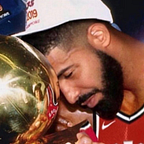Understanding Classical Chart Patterns Series —iH&S
If you are new to Technical Analysis and read a few posts about it, you would have encountered the terms “Cup and Handle”, “Head and Shoulders”, “Double Tops” etc — but what do they really tell us? Does it forecast future price action? Does it tell where the price can go? Or is it just an attempt of traders to make sense of markets?
In this write-up, I’ll be discussing in detail what happens in this popular chart pattern — Inverse Head and Shoulders.
Typically this chart pattern is found at the bottom of your chart.
It’s formed by price movement to the downside and has a counter-trend move — forming the first trough which is your left shoulder.
Price continues to move in the direction of the bigger trend until the sellers are exhausted and buyers start to take control — forming your head.
And as profit-taking happens another trough is printed on the chart, which forms your right shoulder.
As price continues to go down (first red arrow), a group of people will see that the current price of the stock is already cheap and some will see that it's ripe for a bounce. This creates the mini counter-trend rally (first green arrow). The pivot from a downward move to an upward move will be your potential left shoulder (first blue circle).
These new hopefuls will only find their rally as short-lived. As sellers continue to dominate this stock causing the price to go down some more (second red arrow).
But there comes a time in a stock’s price chart that sellers would have sold most of their shares and would be already exhausted. This is now the time where buyers come in and push the price higher (second green arrow). They can easily push the price higher since there are fewer sellers already. The pivot from the last strong move down to the strong move up will act as your potential head (second blue circle).
As price surges higher, there will always be disbelievers and weak hands causing a price pullback (third red arrow). But pullbacks after a strong upward move invites new buyers and old buyers to add more shares. That transition or exchange of hands has created your right shoulder (third blue circle).
And the only important factor left is for the price to break the neckline of the pattern (dotted line). A break of the neckline will confirm that the trend and sentiment have shifted.
Here are a few examples of the pattern:
